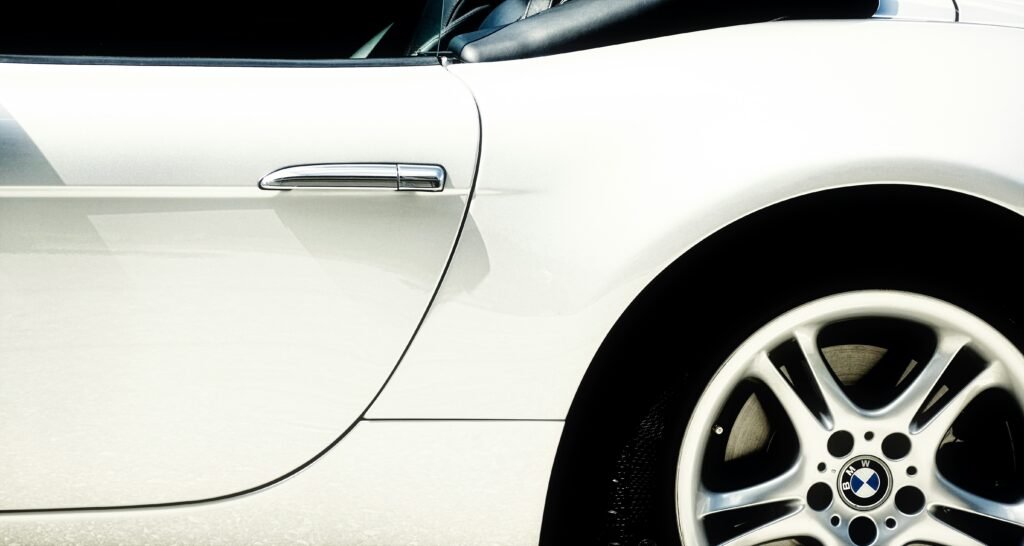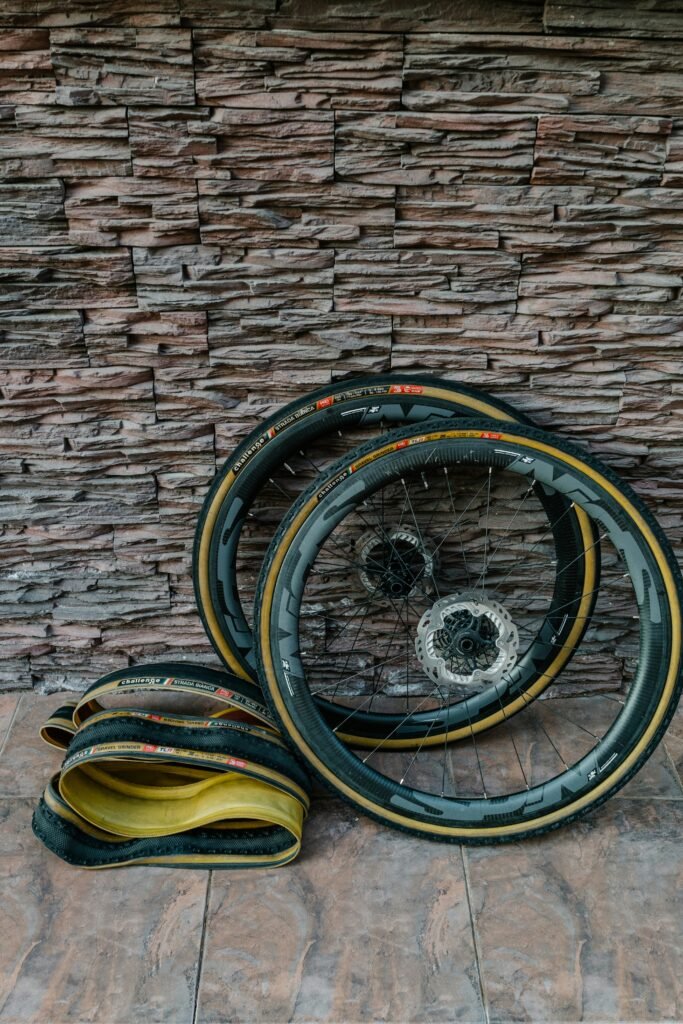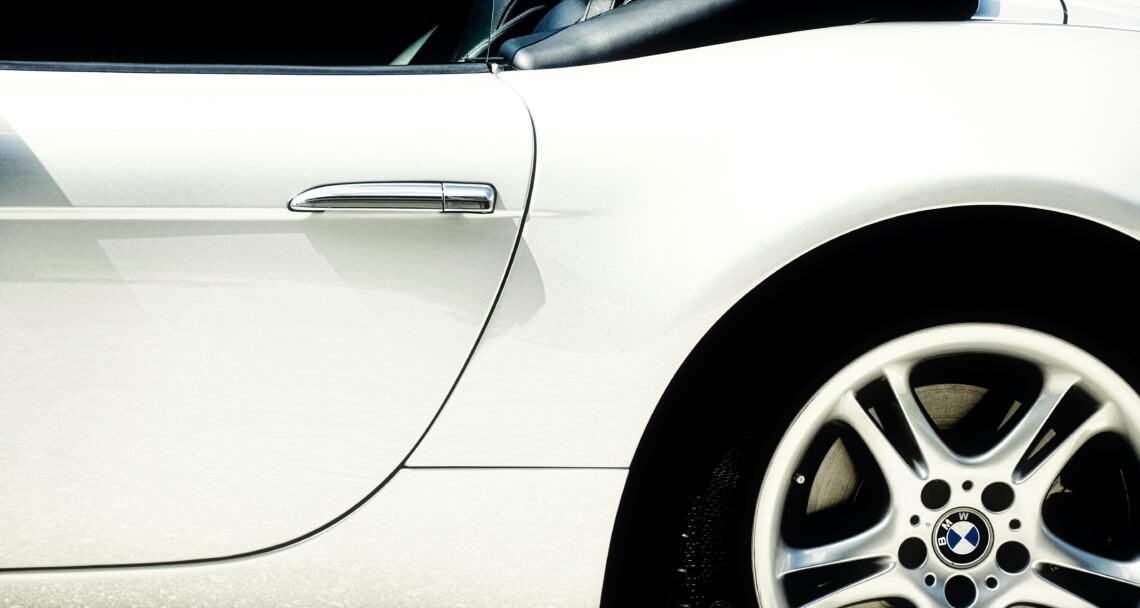You know that feeling when you’re driving down the road and suddenly you hear a loud popping sound? Yep, a flat tire. It’s not only an inconvenience but also a costly one. So, what if there was a way to avoid this altogether? Well, good news! By following some simple and easy tire maintenance tips, you can significantly extend the life of your tires. From regular inspections to proper inflation and rotation, this article will guide you through the essential steps to ensure your tires last longer, saving you time, money, and most importantly, keeping you safe on the road. So, let’s get started and learn how to give your tires the care they deserve!
Proper Maintenance for Longer Lasting Tires
Taking care of your tires is essential for ensuring their longevity and safety. By practicing regular maintenance and following a few simple steps, you can significantly extend the life of your tires and enjoy a smoother and more comfortable ride. In this article, we will guide you through the various aspects of tire maintenance to help you keep your tires in optimal condition.
Regular Inspection
Regularly inspecting your tires is the first step in maintaining their overall health. By conducting routine visual checks, you can identify any visible issues or damages that may require immediate attention. Look for signs of punctures, cuts, bulges, or objects stuck in the tire tread. If you notice any of these issues, it is crucial to address them promptly to prevent further damage or tire failure.
Visual Check
During a visual check, take the time to examine the entire surface of the tire, including the sidewalls. Look for any cracks, splits, or other signs of damage. Additionally, pay attention to the tire valves to ensure they are intact and not leaking air. If you come across any abnormalities or if you are uncertain about the condition of your tires, it is best to consult a professional tire technician.
Tire Pressure Check
Maintaining the correct tire pressure is vital for both the safety and performance of your vehicle. Underinflated tires can lead to decreased fuel efficiency, poor handling, and increased wear, while overinflated tires can cause uneven wear and a harsher ride. Regularly check your tire pressure using a reliable tire pressure gauge. Refer to your vehicle’s owner’s manual or the placard inside the driver’s door jamb for the recommended pressure levels specific to your vehicle.
Tread Depth Check
The tread depth of your tires plays a significant role in providing adequate traction and grip on the road. Insufficient tread depth can lead to reduced handling, longer braking distances, and an increased risk of hydroplaning. To check your tire’s tread depth, you can use a tread depth gauge or the penny test. Insert a penny into the tire groove with Lincoln’s head facing down. If the top of Lincoln’s head is visible, it may indicate that your tire tread is too worn and requires replacement.
Wheel Alignment Check
Proper wheel alignment is crucial for maintaining even tire wear, maximizing fuel efficiency, and ensuring stable handling. Signs of misalignment include uneven tire wear, the vehicle pulling to one side, or a vibrating steering wheel. If you notice any of these indicators, it is recommended to have your vehicle’s wheel alignment checked by a professional technician. Regular alignment checks, especially after hitting potholes or curb incidents, can help prevent premature tire wear and avoid potential safety hazards.
Proper Inflation
Maintaining the correct tire pressure is vital for ensuring your safety on the road. In addition to enhancing your vehicle’s performance, proper inflation can extend the lifespan of your tires.
Importance of Correct Tire Pressure
Correct tire pressure is essential for achieving optimal tire performance and longevity. Underinflated tires experience increased rolling resistance, leading to decreased fuel efficiency and accelerated tire wear. Overinflated tires, on the other hand, have reduced grip, resulting in longer braking distances and a potentially unsafe driving experience. By maintaining the correct tire pressure, you can enhance safety, improve fuel efficiency, and extend the life of your tires.
Check Pressure Regularly
To ensure that your tires are properly inflated, it is essential to check their pressure regularly. Aim for a monthly inspection, as tire pressure can gradually decrease over time. However, it is advisable to check the pressure before long trips or during extreme temperature changes, as these factors may impact tire pressure. Regular monitoring will help you detect any issues promptly and maintain optimal tire performance.
Use a Quality Tire Pressure Gauge
When checking your tire pressure, it is crucial to use a reliable and accurate tire pressure gauge. Several types of gauges are available, including digital, dial, and pencil gauges. Choose whichever suits your preference, but ensure that they are properly calibrated and in good working condition. Using a high-quality gauge will provide accurate readings, allowing you to maintain the correct tire pressure consistently.
Follow Manufacturer’s Recommendations
Your vehicle’s manufacturer provides specific recommendations for tire pressure. These recommendations can usually be found in the owner’s manual or on a placard located on the driver’s door jamb or inside the fuel filler flap. It is essential to adhere to these guidelines as they are specifically tailored to your vehicle’s weight distribution, load capacity, and overall performance. Following the manufacturer’s recommendations will help you maintain optimal tire pressure and ensure a safe driving experience.

This image is property of images.unsplash.com.
Rotate Your Tires
Tire rotation is a crucial maintenance task that helps promote even tire wear and prolong tire life. By redistributing the wear patterns on your tires, you can achieve better handling, improved traction, and extend the overall lifespan of your tires.
Why Tire Rotation is Important
Tire rotation involves changing the position of your tires from one wheel to another regularly. This practice ensures that each tire wears evenly and distributes the workload evenly across all four tires. Since the weight distribution in most vehicles is uneven, tire rotation helps counteract the effects of this imbalance, resulting in more consistent wear patterns and maximizing tire performance.
Frequency of Tire Rotation
The frequency of tire rotation depends on various factors, such as the type of vehicle, tire type, and driving conditions. As a general guideline, it is recommended to rotate your tires every 6,000 to 8,000 miles, or approximately every six months. However, it is advisable to consult your vehicle’s owner’s manual or seek advice from a tire professional for the specific rotation recommendations for your vehicle.
Cross Pattern Rotation
There are multiple tire rotation patterns, with the most common being the cross pattern. This pattern involves moving the front tires to the rear and switching sides, while the rear tires move directly to the front. By alternating the position of each tire, you ensure that wear is evenly distributed across all tires.
Consult Vehicle’s Owner Manual
To ensure that you are following the correct tire rotation pattern for your specific vehicle, it is best to consult the owner’s manual. The manual will provide detailed instructions and recommendations based on your vehicle’s make, model, and drive type. Following the manufacturer’s guidelines will help you maintain optimal tire performance and maximize their lifespan.
Balancing Your Tires
Tire balancing is a crucial aspect of tire maintenance that ensures a smooth and comfortable ride. By addressing any imbalances in your tires, you can minimize vibrations, reduce stress on other vehicle components, and increase overall driving comfort.
Why Tire Balancing is Important
Tire balancing is necessary to counteract any heavy spots in your tires and ensure that they rotate evenly. When tires are unbalanced, they can cause vibrations that are felt through the steering wheel or seat, especially at higher speeds. These vibrations not only affect the driving experience but also contribute to premature tire wear, reduced fuel efficiency, and potential damage to the suspension components. Thus, proper tire balancing is essential for both safety and comfort.
Symptoms of Unbalanced Tires
If your tires are unbalanced, you may experience various symptoms that indicate the need for balancing. These symptoms include vibrations in the steering wheel or seat, uneven tread wear, increased fuel consumption, and a decline in overall driving comfort. If you notice any of these signs, it is advisable to have your tires balanced by a professional technician.
Balancing Procedure
Tire balancing typically involves attaching small weights to the wheel rims. These weights counterbalance any heavy spots and ensure that the tire rotates evenly. The technician will use specialized equipment to measure the imbalance and determine the correct placement of the balancing weights. The process is relatively quick and straightforward, and it is recommended to have your tires balanced whenever you purchase new tires or whenever you experience vibrations or uneven wear.
Seek Professional Help If Needed
While tire balancing may seem like a simple task, it is best to seek professional help if you are unsure or lack the necessary equipment. An experienced technician will have the expertise and tools required to balance your tires accurately. They can also identify any underlying issues that may contribute to the imbalance and provide appropriate solutions. By entrusting the task to a professional, you can ensure that your tires are balanced correctly, resulting in a smoother and safer driving experience.

This image is property of images.unsplash.com.
Proper Wheel Alignment
Wheel alignment plays a vital role in maintaining the overall performance and longevity of your tires. By ensuring that your wheels are aligned correctly, you can prevent uneven tire wear, preserve fuel efficiency, and enhance your vehicle’s handling and safety.
Importance of Wheel Alignment
Proper wheel alignment ensures that all four wheels are perpendicular to the road and parallel to each other. When your wheels are misaligned, they can cause uneven tire wear, increased rolling resistance, and compromised handling. Misalignment may occur due to factors such as hitting potholes or curbs, worn suspension components, or general wear and tear. Regular wheel alignment checks and adjustments are essential for preserving tire life, optimizing fuel efficiency, and maintaining a smooth and comfortable ride.
Signs of Misalignment
Several indicators may suggest that your wheels are misaligned and in need of adjustment. These signs include uneven tire wear, the vehicle pulling to one side, a vibrating steering wheel, or a crooked steering wheel when driving straight. If you notice any of these symptoms, it is advisable to have your wheel alignment checked by a professional technician.
Professional Alignment Service
Wheel alignment is best performed by a professional tire technician equipped with specialized tools and expertise. This service involves adjusting the angles of the wheels to ensure they are in line with the manufacturer’s specifications. The technician will measure and adjust three primary angles: camber, caster, and toe. Correcting these angles will improve vehicle stability, tire wear, and overall handling. Regular alignment checks, especially after incidents that may affect the alignment, will help prevent premature tire wear and ensure optimal performance.
Check Alignment Regularly
To maintain proper wheel alignment, it is advisable to have it checked regularly, or at least once a year. However, it is important to note that certain factors may require more frequent alignment checks, such as driving on rough roads or experiencing significant impacts from potholes or curbs. Regular alignment checks will help detect any misalignment issues early on and prevent further tire wear and potential safety concerns.
Avoid Overloading
Overloading your vehicle can negatively impact both its performance and the lifespan of your tires. By adhering to weight limitations and distributing the load evenly, you can maintain the safety, handling, and longevity of your tires.
Weight Limit Recommendations
Every vehicle has a specific weight limit determined by the manufacturer. This weight limit considers factors such as the vehicle’s structure, suspension, and tire specifications. Exceeding the recommended weight limit can lead to tire overheating, increased rolling resistance, compromised handling, and potential tire failure. It is crucial to adhere to these limitations to ensure a safe and comfortable driving experience.
Effects of Overloading
Overloading your vehicle places excessive stress on the tires, suspension, and other crucial components. The increased weight can cause tire sidewalls to flex more than intended, leading to accelerated tire wear, decreased fuel efficiency, and compromised handling. Overloading also puts additional strain on the suspension system, potentially resulting in premature wear and reduced stability. By avoiding overloading, you can preserve the integrity of your tires and ensure the overall safety and performance of your vehicle.
Distribute Load Evenly
When carrying a heavy load, it is essential to distribute the weight evenly to minimize stress on individual tires. Uneven weight distribution can cause excessive wear on specific tires, negatively impacting their performance and contributing to premature wear. Consult your vehicle’s owner’s manual for specific recommendations on weight distribution for particular load-carrying scenarios. By distributing the load evenly, you can maintain proper tire performance, maximize tire life, and ensure a smooth and safe driving experience.
Avoid Carrying Unnecessary Weight
Reducing unnecessary weight in your vehicle can have a positive impact on both fuel efficiency and tire longevity. Extra weight places increased stress on the tires, suspension, and other vehicle components, leading to accelerated wear and reduced fuel efficiency. Regularly remove any unnecessary items, such as heavy tools or equipment, from your trunk or cargo area to lighten the load. By keeping your vehicle as lightweight as possible, you can improve fuel efficiency, reduce tire wear, and extend the lifespan of your tires.

This image is property of images.unsplash.com.
Avoid Harsh Driving Habits
Your driving habits have a significant impact on the lifespan and performance of your tires. By adopting gentle and smooth driving techniques, you can preserve your tires and enjoy a safer and more comfortable driving experience.
Impact of Harsh Driving on Tires
Harsh driving habits, such as rapid acceleration, hard braking, and sharp turns, can accelerate tire wear and decrease their lifespan. Aggressive driving puts excessive stress on the tires, causing increased friction, heat buildup, and uneven wear. By avoiding these habits and adopting a more gentle driving style, you can minimize the strain on your tires and extend their overall longevity.
Avoid Rapid Acceleration
When you accelerate rapidly, the wheels spin faster, generating greater friction between the tires and the road surface. This friction can cause excessive heat buildup, leading to accelerated tire wear and reduced tread life. Gradual and smooth acceleration not only helps preserve your tires but also improves fuel efficiency and ensures a safer driving experience.
Avoid Hard Braking
Hard braking puts immense stress on your tires by causing them to skid or lock up momentarily. This action generates excessive heat, increases rolling resistance, and leads to uneven tire wear. By practicing controlled and gradual braking, you can minimize the strain on your tires, maintain optimal tread life, and enhance overall driving safety.
Avoid Sharp Turns
Sharp and aggressive turns exert tremendous force on your tires, causing them to scrub against the road surface. This can result in increased tire wear, compromised traction, and potentially unsafe driving conditions. To preserve your tires, it is advisable to approach turns with caution and reduce your speed accordingly. By adopting smooth and controlled turns, you can minimize tire wear and enjoy a safer and more comfortable ride.
Proper Storage
Properly storing your tires not in use is essential for maintaining their condition and prolonging their lifespan. By following a few simple guidelines, you can ensure that your tires remain in optimal condition and are ready for use when needed.
Seasonal Tire Storage
When not in use, seasonal tires must be stored properly to prevent damage and ensure their longevity. If you live in an area with distinct seasons and switch between summer and winter tires, proper storage becomes crucial. Storing tires correctly will help preserve their integrity, prevent distortion, and maintain optimal performance.
Clean and Dry Tires Before Storage
Before storing your tires, it is essential to clean them thoroughly and ensure they are completely dry. Washing away any dirt, debris, or chemicals will prevent them from deteriorating the rubber compound during storage. Additionally, moisture trapped on the tires can lead to the growth of mold or mildew, potentially causing irreversible damage. Once cleaned, allow the tires to dry completely before storing them.
Avoid Storing Under Direct Sunlight
Direct exposure to sunlight can accelerate the aging process and cause damage to the rubber compound of your tires. Prolonged exposure can result in cracking, fading, and degradation of the tire’s structural integrity. When storing your tires, choose a location away from direct sunlight, such as a garage, basement, or dedicated tire storage area. This will help preserve the quality of your tires and extend their overall lifespan.
Store Tires in a Cool and Dry Place
Optimal tire storage conditions involve a cool and dry environment. Extreme temperatures, high humidity, and fluctuations in temperature can adversely affect the condition of your tires. Choose a storage location that maintains a consistent temperature, ideally between 40°F and 85°F (4°C to 29°C), and low humidity levels. Avoid basements or garages with excessive moisture, as dampness can cause the tires to degrade over time. By storing your tires in suitable conditions, you can ensure their longevity and prevent premature deterioration.
Regular Cleaning
Regularly cleaning your tires is an essential part of tire maintenance. By keeping them clean and free from contaminants, you can extend their lifespan, maintain optimal performance, and enhance the overall appearance of your vehicle.
Importance of Keeping Tires Clean
Keeping your tires clean serves both functional and aesthetic purposes. Dirt, mud, and other contaminants can accumulate on the tire’s surface, leading to premature wear and potential damage. Clean tires also enhance the overall appearance of your vehicle, contributing to a neat and well-maintained look. Regular cleaning not only helps preserve the integrity of your tires but also promotes safety and showcases your attention to detail.
Use Mild Soap and Water
When cleaning your tires, it is best to use mild soap and water. Avoid harsh cleaning agents or chemicals, such as bleach or solvents, as they can damage the tire’s rubber compound. Gently scrub the tire’s surface using a sponge or soft brush and rinse thoroughly with clean water. Ensure that no soap residue remains, as it can potentially deteriorate the tire rubber over time.
Avoid Harsh Chemicals
As mentioned earlier, it is important to avoid harsh chemicals when cleaning your tires. Certain chemicals, such as degreasers or tire shine products, contain ingredients that can degrade the tire rubber. Stick to mild soap and water as your primary cleaning agents, and avoid using any unknown or untested products on your tires. By using gentle cleaning methods, you can maintain the integrity of your tires and prevent potential damage.
Clean Tires Regularly
Regular cleaning of your tires is key to maintaining their overall condition and appearance. Aim to clean your tires at least once a month, or more frequently if they are exposed to excessive dirt, debris, or harsh road conditions. Additionally, clean your tires thoroughly before storing them for an extended period. By incorporating regular cleaning into your tire maintenance routine, you can extend their lifespan and enjoy a fresh, clean look on your vehicle.
Monitor Tire Wear
Monitoring tire wear is crucial for ensuring the safety and performance of your tires. By regularly inspecting your tires for uneven wear patterns and signs of excessive wear, you can take appropriate action and prevent potential issues.
Check for Uneven Wear
Regularly inspecting your tires for uneven wear patterns is important for identifying any underlying issues. Uneven wear can occur for various reasons, such as improper inflation, misalignment, or suspension problems. Check the tread of your tires for any irregularities, such as feathering, cupping, or one-sided wear. If you notice any signs of uneven wear, it is recommended to have your tires and vehicle inspected by a professional technician to determine the cause and prevent further damage.
Signs of Excessive Wear
Excessive wear is an indication that your tires are approaching the end of their useful life and require replacement. Common signs of excessive wear include tread depth at or below the legal limit, exposed tread wear indicators (small rubber bars located in the grooves), or sidewall damage. Inspect your tires regularly for these signs, as driving with excessively worn tires can compromise your safety and increase the risk of a tire failure.
Replace Tires When Necessary
Replacing tires when they reach their recommended tread depth or exhibit signs of excessive wear is essential for maintaining safe driving conditions. Worn tires lack adequate traction, especially on wet or icy surfaces, increasing the risk of accidents. Additionally, their ability to channel water away from the contact patch diminishes, resulting in reduced hydroplaning resistance. By replacing your tires when necessary, you can ensure the safety of yourself and your passengers while maintaining optimal vehicle performance.
Consider Tire Rotation
Tire rotation is not only beneficial for maintaining even wear patterns but also for monitoring tire wear. During tire rotation, all four tires are inspected by a professional technician. They can identify any signs of abnormal or excessive wear and provide appropriate recommendations for tire replacement or additional maintenance. Regular tire rotations, combined with diligent monitoring, can help you stay proactive in preserving your tire’s health and avoiding potential issues.
In conclusion, proper tire maintenance is crucial for maximizing their lifespan and ensuring your safety on the road. By conducting regular inspections, maintaining correct tire inflation, rotating tires, balancing wheels, keeping proper wheel alignment, avoiding overloading, practicing gentle driving habits, storing tires correctly, regular cleaning, and monitoring tire wear, you can extend the life of your tires and enjoy a smoother and more comfortable driving experience. Remember, by investing a little time and effort into tire maintenance, you can reap significant rewards in terms of safety, performance, and overall cost savings in the long run.





